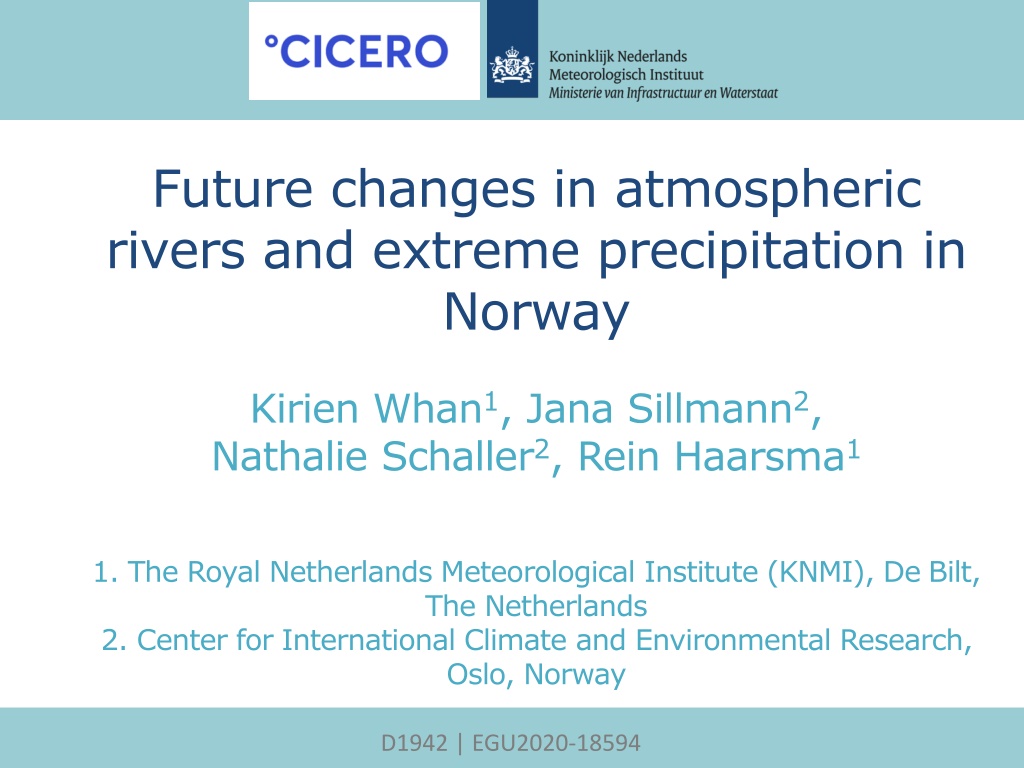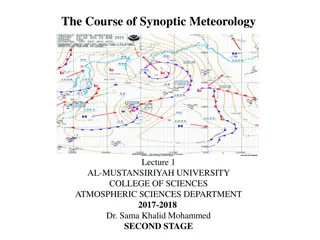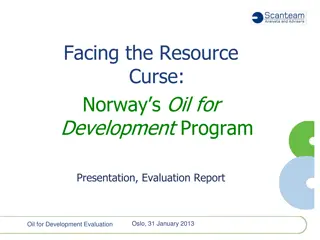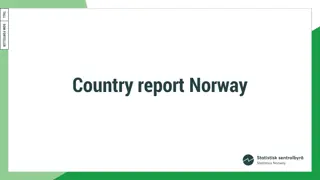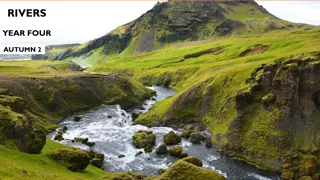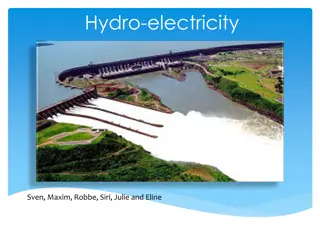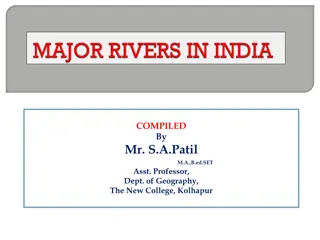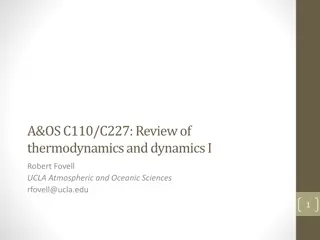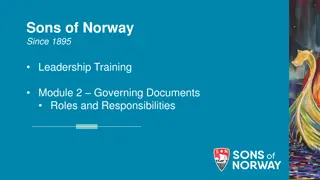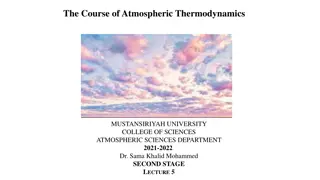Future Changes in Atmospheric Rivers in Norway
Research investigates future trends in atmospheric rivers and extreme precipitation in Norway. Findings show increasing frequency and intensity of atmospheric rivers in the Far-Future, particularly during summer, with winter precipitation rising on the mid- and south-west coasts. Utilizing data observations, the study projects potential impacts of atmospheric rivers on extreme weather events.
Download Presentation

Please find below an Image/Link to download the presentation.
The content on the website is provided AS IS for your information and personal use only. It may not be sold, licensed, or shared on other websites without obtaining consent from the author.If you encounter any issues during the download, it is possible that the publisher has removed the file from their server.
You are allowed to download the files provided on this website for personal or commercial use, subject to the condition that they are used lawfully. All files are the property of their respective owners.
The content on the website is provided AS IS for your information and personal use only. It may not be sold, licensed, or shared on other websites without obtaining consent from the author.
E N D
Presentation Transcript
Future changes in atmospheric rivers and extreme precipitation in Norway Kirien Whan1, Jana Sillmann2, Nathalie Schaller2, Rein Haarsma1 1. The Royal Netherlands Meteorological Institute (KNMI), De Bilt, The Netherlands 2. Center for International Climate and Environmental Research, Oslo, Norway D1942 | EGU2020-18594
Atmospheric river October 2014 An atmospheric river caused a lot of damage when it hit Fl m and Odda in October 2014 Motivated the TWEX project: Translating Weather Extremes into the Future Vertically integrated water vapor transport (IVT) from ERA-Interim during the AR that caused flooding in Fl m and Odda View animation in presentation mode Future changes in atmospheric rivers and extreme precipitation in Norway EGU 2020
Data Observations Precipitation: seNorge2 IVT : ERA-Interim EC-Earth (RCP 4.5) T799 L91 (~25 km) 6 ensemble members of 5 years (30 years): 1. Past (1850 854) 2. Current (2002 2006) 3. Near-Future (2030 2034) 4. Far-Future (2094 2098) Future changes in atmospheric rivers and extreme precipitation in Norway D1942 | EGU2020-18594 3
Atmospheric river definition We used a back-tracking AR detection algorithm based on IVT exceedances on the Norwegian coast above a certain threshold 1. a varying IVT threshold for each period 2. a fixed IVT threshold for all periods Future changes in atmospheric rivers and extreme precipitation in Norway D1942 | EGU2020-18594 4
AR frequency is increasing in the Far-Future, particularly in summer Future changes in atmospheric rivers and extreme precipitation in Norway D1942 | EGU2020-18594 5
ARs are more intense in the Far-Future Future changes in atmospheric rivers and extreme precipitation in Norway D1942 | EGU2020-18594 6
Winter precipitation increases in the Far-Future mWC = mid-West Coast of Norway sWC = south-West Coast of Norway Future changes in atmospheric rivers and extreme precipitation in Norway EGU 2020 7
Extreme value analysis We fit a GEV to de-trended region-mean winter precipitation maxima We model the location parameter as a function of a covariate: 1. AR intensity, or 2. Specific humidity (Q) Examine the 20-year return-values (and their confidence intervals) when the covariate is high or low (99thor 1stpercentiles) Future changes in atmospheric rivers and extreme precipitation in Norway D1942 | EGU2020-18594 8
Extreme winter precipitation events are significantly larger when ARs are intense mWC = mid-West Coast of Norway sWC = south-West Coast of Norway Future changes in atmospheric rivers and extreme precipitation in Norway D1942 | EGU2020-18594 9
In the Far-Future AR days are warmer and have more precipitation falling as rain rather than snow Fraction of precipitation falling when temperature is < 0 C Region mean temperature Future changes in atmospheric rivers and extreme precipitation in Norway D1942 | EGU2020-18594 10
Conclusions In the Far-Future Norway will experience: 1. More frequent and intense ARs, and a shift in seasonality 2. Extreme precipitation events are larger in magnitude when the AR event is more intense, which will happen more often in the Far-Future 3. AR days will be warmer which means that more precipitation will fall as rain rather than snow These results have severe implications for water resource management in Norway Future changes in atmospheric rivers and extreme precipitation in Norway D1942 | EGU2020-18594 11
Limitations and future work We use only one high-resolution GCM (EC- Earth) and concentration pathway (RCP 4.5) Need to assess more GCMs and RCPs as models are available as part of the PRIMAVERA project The changed frequency in summer is very interesting and requires further research. Future changes in atmospheric rivers and extreme precipitation in Norway D1942 | EGU2020-18594 12
Whan, K., Sillmann, J., Schaller, N. et al. Future changes in atmospheric rivers and extreme precipitation in Norway. Climate Dynamics 54, 2071 2084 (2020). https://link.springer.com/article/10.1007/s00382 -019-05099-z Future changes in atmospheric rivers and extreme precipitation in Norway D1942 | EGU2020-18594 13
